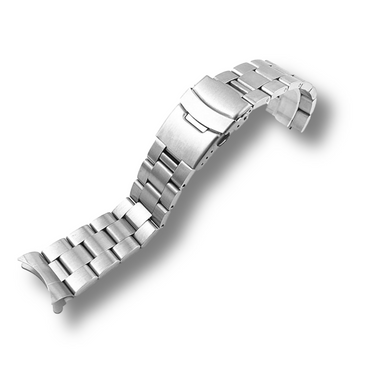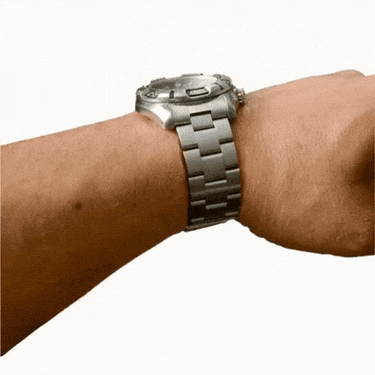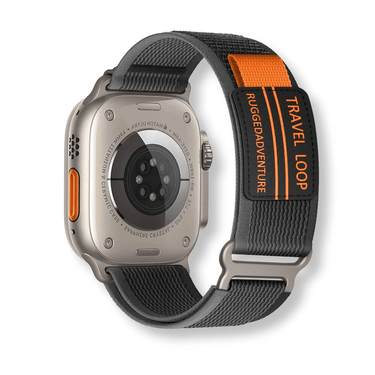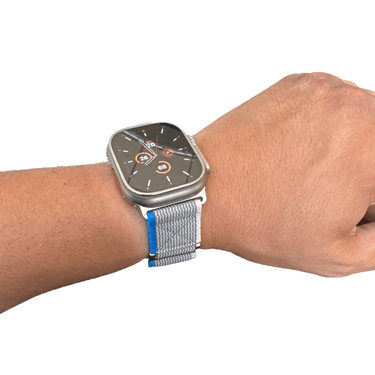Have you ever wondered why some watchbands age gracefully while others quickly show signs of wear and tear? Caring for watch bands is crucial not only for maintaining their appearance but for extending the lifespan of your timepieces. In this watchband care guide, we will explore essential cleaning methods, material-specific maintenance tips, and practical advice to ensure your watch straps remain pristine for years to come. With the right approach to watch strap maintenance, you can elevate your accessory game and enjoy the luxury of a well-cared-for watch.
Key Takeaways
- Understanding the importance of watchband care can prolong the life of your timepiece.
- Different materials require unique cleaning and maintenance techniques.
- Regularly rotating your straps helps prevent wear from friction.
- Proper storage solutions keep your watch straps in top condition.
- Identifying signs of damage will help you know when it's time for a replacement.
- Professional maintenance can provide additional care for luxury watchbands.
The Importance of Watchband Care
Maintaining your watchbands is essential for preserving their quality and maximizing their lifespan. The importance of watchband care cannot be overstated, especially for those who cherish their timepieces. By focusing on proper care, watch enthusiasts can enjoy their accessories for years to come.
High-quality straps, when cared for appropriately, can endure prolonged use. This not only enhances the overall appearance of your watch but also guards your investment. Neglecting to maintain watch straps can lead to premature wear, potentially diminishing the value of your timepiece.
Regular care helps prevent damage from everyday wear and tear. Various materials require specific attention, making it crucial to know how to manage each type effectively. Understanding the unique characteristics of your watchbands is vital in ensuring their longevity.
| Watchband Type | Benefits of Care | Risks of Neglect |
|---|---|---|
| Nylon | Resistant to water and tears, long-lasting | Fades in color, loses elasticity |
| Rubber | Flexible, easy to clean | Cracks and deteriorates in sunlight |
| Leather | Classic aesthetic, comfortable fit | Cracks, dries out, and can become discolored |
| Canvas | Durable and washable | Can absorb moisture and odors |
Ultimately, embracing the importance of watchband care contributes significantly to watchband longevity. Understanding and practicing effective techniques for maintaining watch straps ensures they remain appealing and functional for years.
Understanding Different Watchband Materials
Choosing the right watchband materials can significantly impact both the functionality and aesthetic appeal of your timepiece. Various types of watch straps offer distinct advantages and challenges in terms of care and maintenance. Each material demands different techniques to ensure longevity and appearance.
Nylon is known for its durability and resistance to wear, making it a popular choice among outdoor enthusiasts. This versatile material can withstand the elements but benefits from gentle cleaning with mild soap and water to maintain its vibrant colors.
Rubber is another popular option, especially for sports watches. It is waterproof and easy to clean, requiring only a damp cloth for upkeep. Proper material care ensures that rubber watchbands stay flexible and comfortable.
Leather, on the other hand, exudes sophistication but requires special attention. It is essential to avoid excessive moisture and direct sunlight to prevent cracking and fading. Regular conditioning with leather care products can greatly enhance its lifespan while keeping it looking sharp.
Finally, canvas straps combine comfort with a casual style. Similar to nylon, they can resist tears but may absorb dirt and moisture over time. Periodic cleaning is crucial to maintain the fabric's appearance and prevent any unpleasant odors.
Understanding the different types of watch straps allows you to adopt the most suitable material care techniques for each, ultimately extending their lifespan and preserving their aesthetics.
Cleaning Your Watch Straps: Expert Techniques for Different Materials
Maintaining the appearance and longevity of your watch straps involves mastering various cleaning watch straps techniques tailored to specific materials. Each strap type requires distinct care methods to ensure optimal cleanliness without causing damage.
Nylon Straps
Nylon watch straps are popular for their durability and comfort. To clean them effectively:
- Remove the strap from the watch.
- Mix gentle soap with warm water.
- Use a soft cloth or a soft-bristle toothbrush to scrub the strap lightly.
- Rinse thoroughly with clean water to eliminate any soap residues.
- Pat dry with a towel and allow it to air dry completely before reattaching.
Rubber Straps
Rubber watch straps can attract dirt and oils. For proper maintenance, follow these material-specific cleaning tips:
- Detach the strap from the watch.
- Wipe with a damp cloth to remove surface dirt.
- For deeper cleaning, use a mixture of mild soap and water.
- Utilize a soft brush to reach any grooves or textures.
- Rinse and dry thoroughly, avoiding extreme heat or direct sunlight.
Leather Straps
Leather straps add a touch of elegance but need special care. Consider these watch strap cleaning techniques:
- Remove the strap carefully.
- Use a dry, soft cloth to wipe away dirt and oils.
- Apply a small amount of leather conditioner if the leather looks dry.
- Never soak leather; instead, use a damp cloth for stains.
- Let the strap air dry naturally to maintain its shape.
Canvas Straps
Canvas straps offer a casual aesthetic. Cleaning them can be straightforward. Here are practical tips:
- Take the strap off the watch.
- Soak it in lukewarm, soapy water for about 15-20 minutes.
- Scrub gently using a soft brush to remove stubborn stains.
- Rinse thoroughly to remove all soap.
- Air dry flat, away from direct sunlight to preserve color and structure.
Following these material-specific cleaning tips will keep your watch straps looking fresh and extend their life. Regular cleaning is essential to avoid buildup and maintain the aesthetic appeal of your timepiece.
Watchband Care Guide: Maintenance Tips to Extend Lifespan
Maintaining your watchbands is crucial for prolonging watch strap life and ensuring they remain in top condition. Here are some practical watchband maintenance tips that can help you achieve just that.
- Regular Cleaning: Clean your watch straps regularly to remove dirt and grime. For nylon and rubber straps, a damp cloth usually does the trick. Leather and canvas require specialized cleaners to maintain their integrity.
- Appropriate Storage: Store your watchbands in a cool, dry place away from direct sunlight. Consider using a watch roll or box to protect them from dust and scratches.
- Treatment Against Environmental Damage: Watch strap care involves being cautious of environmental factors. Avoid exposing your straps to harsh chemicals and moisture. Leather, for instance, can suffer if it gets wet, leading to cracking.
- Rotating Straps: Regularly switch between different straps. This helps minimize wear and allows each band to rest, contributing to prolonging watch strap life.
In conclusion, investing time in proper watchband care pays off by keeping your straps looking great and lasting longer. A little effort goes a long way in maintaining the quality of your timepieces.
| Watchband Material | Cleaning Method | Storage Tip | Environmental Precautions |
|---|---|---|---|
| Nylon | Wipe with a damp cloth | Store in a soft case | Avoid prolonged exposure to moisture |
| Rubber | Rinse with water; mild soap if needed | Keep in a dry, airy spot | Keep away from oils and chemicals |
| Leather | Use leather cleaner | Store away from direct sunlight | Avoid wet conditions to prevent damage |
| Canvas | Spot clean with a damp cloth | Store flat to avoid creasing | Keep away from paint or strong chemicals |
Proper Storage: Ensuring Your Watch Straps Remain Pristine
Proper storage plays a vital role in maintaining the lifespan and appearance of your watch straps. Whether you have leather, rubber, or nylon bands, effective strap organization is crucial. Keeping your straps in optimal conditions will protect them from wear and tear, allowing you to enjoy them for much longer.
Recommended Storage Solutions
Choosing the right method for storing watch straps will help preserve their quality. Consider the following storage solutions:
- Watch Box or Organizer: A dedicated watch box designed for storing watch straps can keep them protected and organized.
- Drawer Storage: Use a drawer lined with soft fabric to create a cushioned space for your straps.
- Velvet Pouches: Small, soft pouches help to minimize scratches and damage when storing individual straps.
- Shadow Box Display: For those who want to show off their collection, a shadow box allows you to display straps while keeping them safe from environmental factors.
Organizing by Material
Strap organization by material enhances accessibility and prevents potential damage during storage. Grouping your straps can make a significant difference in how well they maintain their condition. Here are suggested categories for storing watch straps:
| Material | Storage Tips | Potential Issues |
|---|---|---|
| Leather | Store in a cool, dry place away from sunlight. | Moisture can lead to mold or mildew. |
| Rubber | Avoid prolonged exposure to heat; use a dedicated compartment. | Heat can cause degradation and reduce elasticity. |
| Nylon | Machine wash occasionally; hang to dry. | Improper cleaning might cause fading or fraying. |
| Canvas | Store flat to retain shape; avoid heavy compressions. | Can become misshapen if stored improperly. |
By implementing these strategies for storing watch straps and focusing on effective strap organization, you can ensure that your collection stays looking new and remains ready for use whenever you need it.
Troubleshooting Common Issues: Expert Solutions for Optimal Strap Care
Maintaining your watch straps requires careful attention to common strap issues that can arise over time. Addressing these problems promptly ensures your watchbands remain in excellent condition.
- Frayed Edges: To combat fraying, trim any loose threads with sharp scissors. This watch strap troubleshooting technique prevents further damage.
- Stretched Holes: When holes become stretched, reinforce them using a strong adhesive. This simple repair can prolong the lifespan of your strap.
- Odors: If your strap develops an unpleasant smell, sprinkle baking soda on it. Allow it to sit for several hours before brushing it off to neutralize odors effectively.
- Scratches: Keep your watch hardware gleaming by polishing it with a soft cloth. Regular polishing is one of the best watch strap care solutions to maintain a pristine appearance.
These strategies are essential for effective watch strap troubleshooting and ensuring that your watch straps maintain both functionality and style. Regular checks and minor repairs can save you from costly replacements in the future.
General Maintenance Tips: Prolonging the Longevity of Watchbands
Engaging in effective general watchband maintenance can significantly extend the life of your favorite straps. Implementing simple strategies, such as strap rotation and careful handling, plays a vital role in preserving the quality of your watchbands.
Rotating Your Straps
Strap rotation is an essential practice that helps distribute wear evenly across your collection. By switching out straps regularly, you prevent any single strap from experiencing excessive stress. This mindful approach not only maintains the aesthetics of each band but also minimizes damage over time. Aim to rotate your watchbands every few days or weekly, depending on your usage.
Avoiding Chemicals and Moisture
Practicing caution with chemicals is vital in avoiding chemical damage to your watchbands, particularly those made of leather and fabric. Substances like cleaning agents and perfumes can lead to discoloration and deterioration. Always remove your watch before using such products. Moisture management also plays a crucial role in preservation. Keeping bands dry prevents mildew and unpleasant odors. After exposure to sweat or rain, ensure to wipe your strap thoroughly to maintain its integrity.
Know When to Replace Your Watchstrap
Understanding the appropriate time for replacing watch straps can significantly enhance your comfort and the overall appearance of your timepiece. Regularly assessing your watchstrap for signs of wear is crucial for maintaining its quality. A few indicators can alert you to the need for a replacement. Recognizing these watch strap replacement signs allows you to take proactive measures before the condition worsens.
Signs of Wear and Tear
Look for the following signs of wear to determine if your watch strap needs replacing:
- Fraying or breaking threads
- Cracks or deep scratches in the material
- Persistent odors that don't dissipate with cleaning
- Discoloration or fading that affects the strap's appearance
- Loose or defective buckles and clasps
When to Consider a Replacement
Regular inspections of your watch strap can guide you in determining when to consider replacing it. If any of the above watch strap replacement signs are evident, it may signify that the strap is nearing the end of its lifespan. Additionally, noting the expected lifespan based on the material can help:
| Material | Average Lifespan | Common Signs of Wear |
|---|---|---|
| Nylon | 1-3 years | Fraying, discoloration |
| Rubber | 2-4 years | Cracking, fading |
| Leather | 1-5 years | Cracking, persistent odors |
| Canvas | 1-3 years | Fraying, mold growth |
Being attentive to these signs helps ensure your watchstrap maintains its comfort and aesthetic appeal, creating an enjoyable wearing experience.
Professional Maintenance Tips for Watch Straps
For those seeking to maximize the lifespan of their watch straps, engaging in professional watch strap maintenance can make a significant difference. These expert care tips are particularly valuable for intricate materials such as leather, which require special attention. Regular professional cleaning and conditioning can help maintain the natural oils of the leather, preventing it from drying out and cracking.
Utilizing watch strap services not only ensures thorough cleaning but also provides a platform for identifying potential issues before they escalate. Skilled professionals possess the necessary tools and knowledge to assess the condition of your watch straps accurately.
Among the numerous benefits, the following stand out:
- Deep Cleaning: Removes dirt and oil build-up effectively.
- Conditioning: Helps maintain flexibility and suppleness, especially for leather bands.
- Repair Services: Specialists can fix issues like fraying or broken clasps, prolonging the life of your straps.
- Maintenance Plans: Many professionals offer memberships or plans for regular cleaning and inspections.
Consider scheduling a professional maintenance session at least once a year to ensure your watch straps remain in top condition. A little investment in expert care can greatly extend the life of your cherished timepieces.
| Service Type | Description | Benefits |
|---|---|---|
| Deep Cleaning | Thorough removal of dirt, grime, and oils. | Enhances overall appearance and hygiene. |
| Conditioning | Application of appropriate conditioners to leather straps. | Prevents cracking, maintains softness. |
| Repairs | Fixing frays, loose threads, or broken clasps. | Prolongs the lifespan of the strap. |
| Routine Inspections | Regular checks for potential issues. | Detections early avoid major problems later. |
Conclusion
As we wrap up this comprehensive guide, it’s clear that caring for watchbands is an essential practice for any watch enthusiast. The final thoughts on watchband care emphasize the significance of regular maintenance, which not only enhances the lifespan of your straps but also keeps them looking stylish. Whether you’re rocking a leather, rubber, or nylon strap, understanding how to clean and store them properly will pay off in the long run.
In our watch strap maintenance summary, we've highlighted crucial strategies—like avoiding harsh chemicals, proper storage solutions, and the need for rotating your straps—to keep them in peak condition. These tips serve as vital takeaways for watch enthusiasts who want to protect their investments in timepieces and accessories alike.
By applying these techniques, you're not just prolonging the functionality of your watchbands; you're also ensuring that they remain a reflection of your personal style for years to come. Remember, a well-maintained watch strap can elevate your entire look, so start implementing these practices today.
FAQ
How often should I clean my watchbands?
It's recommended to clean your watchbands every few weeks, especially if you wear them daily. Regular cleaning helps prevent dirt and grime accumulation, ensuring longevity and a fresh appearance.
What is the best way to store watchbands?
Store your watchbands in a cool, dry place, away from direct sunlight and moisture. Using a dedicated watch box or organizer can help keep them protected and well-ventilated, especially for leather straps.
How can I remove odors from my watch straps?
To eliminate odors, sprinkle baking soda on the affected area of the strap and let it sit overnight. Shake or brush off the excess in the morning. This method works well for materials like rubber and nylon.
Are there specific cleaning methods for different strap materials?
Yes, each material requires different cleaning methods. For example, nylon can be gently washed with soap and water, rubber can be wiped down with a damp cloth, leather needs special conditioners to avoid deterioration, and canvas can be cleaned using a damp sponge with mild detergent.
How do I know when to replace my watchband?
Signs of wear include fraying edges, cracking, persistent odors, and stretched holes. If you notice any of these, it may be time to replace the strap to maintain both functionality and style.
Is it necessary to rotate my watchbands?
Yes, rotating your watchbands is an excellent practice. It minimizes wear on any single band and allows you to enjoy different styles while extending the lifespan of each strap.
Can professional cleaning really extend the life of my watchbands?
Absolutely! Professional cleaning and conditioning, especially for leather bands, can help restore their appearance and protect them from damage, ensuring they remain functional and stylish for longer.
Source Links
- How to Care for Your Canvas Watch Straps to Ensure Longevity - https://www.watchplaza.com/us/blogs/watch-blog/how-to-care-for-your-canvas-watch-straps-to-ensure/?srsltid=AfmBOorh9bCtfXrRzGQHCfR4l9OdNeUgWHvlEULQZZrgLKMPmDhbiFXw
- The Ultimate Guide to Watch Strap Maintenance and Care - https://www.blusharkstraps.com/blogs/article/guide-to-watch-strap-maintenance-and-care?srsltid=AfmBOooCstIPogtoVbBDxsvohdivNbUmfqsqVz_1oguBW1pb7vCiZSlN
- The Ultimate Watch Strap Care Guide: Tips for Cleaning and Maintenance - https://www.blusharkstraps.com/blogs/article/watch-strap-care-guide-tips-for-cleaning-and-maintenance?srsltid=AfmBOoqDj7xfKEbw-pFycqIEavzI4t708Pc0pvnTJaDw8AxV_pg037Sr
























